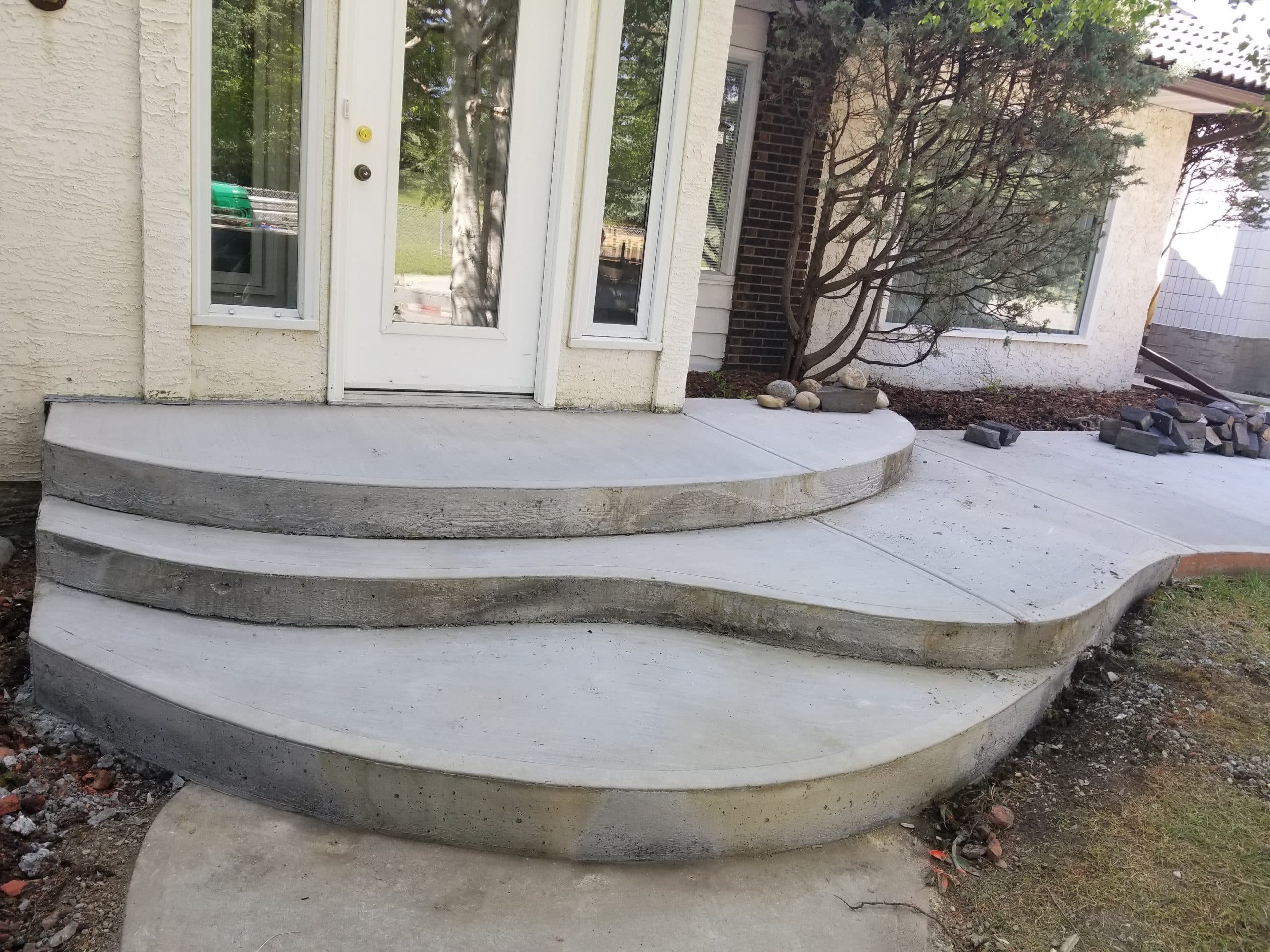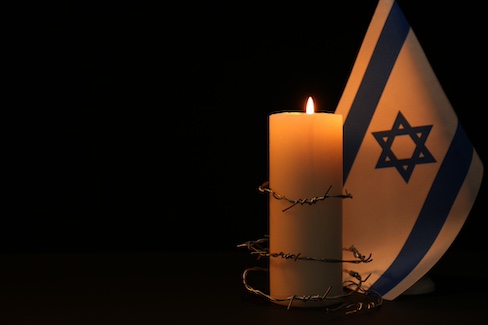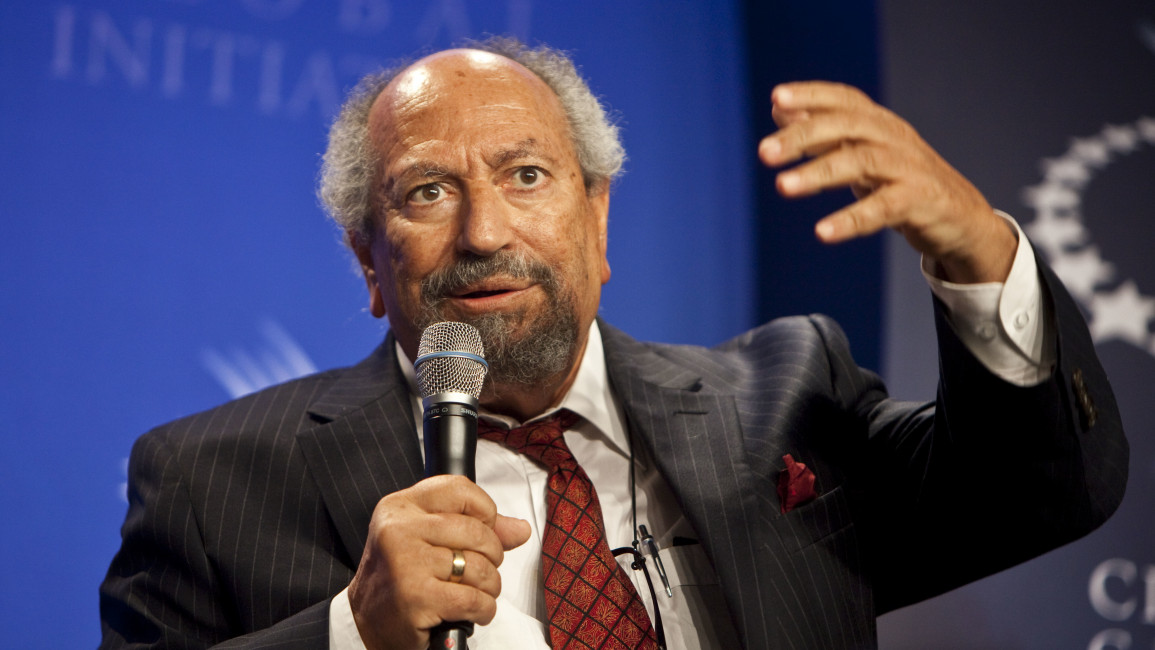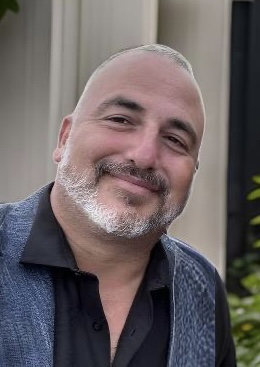Features
Transform Your Space: Creative Ideas for Decorative Concrete

Concrete has long been valued for its durability and versatility, but it’s not typically associated with aesthetics. However, with the advent of decorative concrete, this modern and simple material is making a stylish comeback, as it offers endless possibilities for adding beauty and personality to your Calgary home or business. Here are just a few innovative ideas to inspire your next home renovation project.
Stamped Concrete
Stamped concrete in Calgary is one of the most popular options for decorative appeal. This technique involves pressing patterns into freshly poured concrete to mimic the look of other materials such as brick, stone, tile, or even wood. Stamped is an excellent choice for patios, driveways, walkways, and pool decks. It offers the aesthetic appeal of more expensive materials at a fraction of the cost while maintaining the strength and durability.
Stained Concrete
Stained concrete is another versatile option that adds color and depth to your surfaces. There are two main types of stains: acid-based and water-based. Acid stains penetrate the material and react chemically to create rich, variegated colors that resemble natural stone. Water-based stains, on the other hand, offer a broader palette of hues and can be mixed to create custom colors. Stained works well for floors, countertops, and outdoor surfaces, providing a unique and long-lasting finish.
Polished Concrete
For a sleek, modern look, polished concrete is an excellent choice. The process involves grinding the surface with progressively finer abrasives until it reaches the desired level of shine. Polished can be further enhanced with the use of dyes and stains to add color, even though this finish is highly durable, low-maintenance, and reflective, making it ideal for indoor floors in residential, commercial, and industrial settings.
Concrete Overlays
Concrete overlays are a fantastic way to rejuvenate existing surfaces without the need for complete replacement. An overlay is a thin layer applied over the old surface, which can then be stamped, stained, or polished. This technique can fix minor imperfections and give your surfaces a fresh, new look. Overlays are perfect for driveways, patios, and interior floors that have seen better days but still have a solid foundation.
Exposed Aggregate
Exposed aggregate concrete in Calgary is a decorative option that showcases the natural beauty of stone and pebble inclusions within the mix. After pouring, the top layer is removed to reveal the aggregate beneath. This finish provides a textured, non-slip surface, making it an excellent choice for driveways, walkways, and pool decks; the variety of aggregate materials available allows for customization to suit your design preferences.
Engraved Concrete
Concrete engraving involves using special tools and equipment to etch designs, patterns, or text into the surface. This technique can transform plain surfaces into an artistic statement, and engraving can be combined with staining to highlight the designs and create intricate, eye-catching details. It’s a great option for adding logos, borders, or custom artwork to floors, patios, and entryways.
Concrete Countertops
Concrete countertops are gaining popularity for their durability and modern aesthetic. They can be customized in terms of shape, size, color, and finish to suit your kitchen or bathroom design. Integrating decorative elements like inlays, embedded stones, or glass can further enhance their visual appeal. Such countertops are heat and scratch-resistant, making them a practical and stylish choice for any home.
Colored Concrete
Adding color to concrete is a simple yet effective way to enhance its appearance. Integral color, which involves adding pigment directly to the mix, ensures consistent color throughout the material. Alternatively, surface-applied color options like stains, dyes, and tinted sealers can create a wide range of hues and effects. Colored can be used for driveways, patios, floors, and even garden paths to add a pop of color and complement your overall design scheme.
Concrete Furniture
Concrete furniture is an emerging trend that combines functionality with artistic design. From tables and benches to planters and fire pits, these sturdy furniture pieces are durable and weather-resistant, making them suitable for both indoor and outdoor use. The versatility allows for unique shapes and designs that can serve as statement pieces in your home or garden.
Endless Possibilities for Concrete in Calgary
Decorative concrete opens up a world of possibilities for enhancing the beauty and functionality of your spaces. Whether you’re looking to update your patio, revamp your floors, or add a unique touch to your countertops, there’s a decorative option to suit your needs. With its blend of durability, versatility, and aesthetic appeal, decorative concrete in Calgary is a smart choice for any home or business improvement project.
Features
Auschwitz Tours from Warsaw: Preserving Memory, Honoring History

Auschwitz is one of the most powerful symbols of the Holocaust and its lessons are as current as ever. As the world prepares for International Holocaust Day the need to remember and educate becomes even more urgent.
At Auschwitz Tours from Warsaw, our mission is to help you connect with this dark chapter in history. We offer guided tours to Auschwitz-Birkenau from Warsaw and Krakow so you can visit the largest Nazi concentration and extermination camp where over a million innocent lives were taken.
Why Auschwitz Tours from Warsaw?
A visit to Auschwitz is an emotional experience and we want you to get the most out of it. Our guides will walk you through the historical context, tell you stories of those who suffered, resisted, and in some cases survived. With respect and sensitivity, we will share the history that can’t be forgotten.
We offer full day tours from both Warsaw and Krakow so you can visit Auschwitz whether you’re coming from Poland’s capital or its cultural hub. Our tours include comfortable round trip transportation so you can focus on the experience without worrying about the logistics.
Extra Educational Content
Apart from the day trips, Auschwitz Tours from Warsaw also provides a lot of educational content about Auschwitz and the Holocaust. Our website is a resource for learning with articles and materials about Auschwitz’s history, World War II, and the long-term impact of the Holocaust.
For those who can’t visit in person, these materials are a window into this dark period of human history so the lessons of the Holocaust are available to everyone.
Honoring the Past on International Holocaust Remembrance Day
International Holocaust Remembrance Day on January 27th is a global moment of remembrance. It’s a day to remember the 6 million Jews and millions of others murdered by the Nazis during World War II.
It’s not just about the victims of the Nazi regime but about learning from history so we never repeat the mistakes.
January 27th is the anniversary of the liberation of Auschwitz-Birkenau in 1945, a day of unimaginable suffering but also of survival. The site itself is closed on this day for commemoration, but it’s a place of great importance for those who want to reflect on what happened here.
Although the gates are closed to visitors on January 26 and 27, it’s a day of personal reflection and remembrance for those who have passed away.
But on January 27th, a special area will be open for those who want to mark this solemn day on the grounds of the Memorial. This is a unique opportunity to reflect and remember in silence, on the very ground where so many lives were lost.
If you can’t visit Auschwitz today, International Holocaust Remembrance Day is still a chance to connect with the stories of survivors and victims. It’s a day to educate ourselves and others, not just about the past but about the present need to face hatred, intolerance, and anti-Semitism in all its forms.
If you’d like to learn more about our tours or explore our educational content, visit us at auschwitztoursfromwarsaw.com. Join us in remembering the past and keeping the message of “Never Again” alive.
Features
The Hurdles Facing Egyptian Intellectuals

By HENRY SREBRNIK In the twentieth century, many middle-class Egyptians adopted a cosmopolitan cultural style. They wanted to move the country toward a more liberal and secular state.
But they always came up against, and were unable to surmount, the strength of a very strong Islamic religious culture. In despair, some, despite their own preferences, ended up preferring autocracy to what they considered a backward and dangerous ideology.
In 1952, a revolution brought the Free Officers movement, led by Gamal Abdel Nasser, to power. It seemed to have brought a secular quasi-socialist regime to power.
But the undercurrents of politicized religion, though banned by Nasser, did not disappear. The Muslim Brotherhood, which had been founded in 1928 by Hassan al-Banna and preached a fundamentalist Islamism guarded exclusively by the sharia, was outlawed. Its most prominent theoretician, Sayyid Ibrahim Qutb, was executed in 1966.
But secular movements fell from favour following Egypt’s defeat by Israel in 1967, and the country was transformed into an autocracy following Nasser’s death three years later. From 1981 until 2011, Egypt was ruled with an iron hand by Hosni Mubarak, until popular unrest forced him to step down during the Arab Spring.
Would this herald a new, democratic chapter in Egypt? Would free elections bring about a rebirth of secular politics? The answer was no.
Mubarak’s ouster cleared the way for the Muslim Brotherhood to participate openly in Egyptian politics, and to that end the group formed the Freedom and Justice Party. In April 2012 the party selected Mohamed Morsi to be its candidate in Egypt’s presidential election. Morsi defeated Ahmed Shafiq, a former prime minister under Mubarak, that June.
Morsi soon issued an edict declaring that his authority as president would not be subject to judicial oversight until a permanent constitution came into effect. Although he defended the edict as a necessary measure to protect Egypt’s transition to democracy, mass demonstrations were held against what many saw as a seizure of dictatorial powers.
Worsening economic conditions, deteriorating public services, and a string of sectarian incidents, including attacks on the country’s Coptic Christian minority, strengthened opposition to Morsi’s rule. Clashes between Morsi’s supporters and critics in late June 2013 culminated in massive anti-Morsi protests around the country.
On July 3 the military under the head of the Egyptian Armed Forces, General Abdel Fattah al-Sisi, removed Morsi from power. A figurehead president, Adly Mansour, was installed, but it was clear that Sisi, who retained the title of defence minister, wielded power.
Sisi claimed that the military had carried out the will of the Egyptian people, as expressed in the anti-Morsi protests, and that the Islamist-dominated administration led by Morsi had put the Muslim Brotherhood’s interests before those of the country.
A month later the Egyptian police and armed forces committed what Human Rights Watch deemed “one of the world’s largest killings of demonstrators in a single day in recent history.”
Eleven years on, the murder of over 1,000 supporters of the deposed president, known as the Rabaa Massacre, has gone largely unpunished. The Muslim Brotherhood was formally outlawed that September and Morsi was jailed. Prison conditions were harsh, and he was denied adequate medical attention. He died in 2019.
Sisi officially left the military to run for president and was elected in a clearly fraudulent manner in May 2014. He has been re-elected twice since, in March 2018 and again in December 2023, when he was reported to have won with 89.6 per cent of the vote after several opposition figures were prevented from participating. Under his reign, Egypt has degenerated into a police state even more repressive than the 30-year dictatorship of Hosni Mubarak.
Caught between the proverbial rock and a hard place, Egypt’s pro-democracy and civil society movements jettisoned their long-standing commitments to human rights and the rule of law and enthusiastically supported the return of military rule.
One of those civil society leaders, Saad Eddin Ibrahim, was among Egypt’s most influential intellectual figures. He had spent his career insisting that democracy is the solution both to political authoritarianism and to the allures of religious fundamentalism in the Arab world.
Pushing back against the prevailing view that Islamist groups must be marginalized, he argued that they should be included in the democratic process. He even went so far as to advocate, in an article titled “Toward Muslim Democracies,” that “it will be better for us as democrats, for the Islamists, and for Egypt to enlist Islamists under the flag of democracy.”
He encouraged Egyptians to support this vision and put aside common fears about Islamist movements and had been arrested for his views under Mubarak. Yet even he abruptly became an apologist for authoritarian rule.
The “problem” was that the bulk of the Egyptian masses were unwilling to part with their religious traditions or wholly consign them to the realm of the private. Put another way, if most Egyptians were given the choice between being liberal or being Muslim, they would overwhelmingly select the latter.
Faced with that reality, these intellectuals forged authoritarian alliances to forcibly impose their worldview on an otherwise unwilling populace. When Morsi and the Muslim Brotherhood were in actual control of the state rather than at its fringes, the liberal secularists chose authoritarian rule. This is the same tragedy found in most of the Arab world.
Henry Srebrnik is a professor of political science at the University of Prince Edward Island.
Features
Tafsik: Canadian organization created in wake of October 7 has played leading role in combating anti-Israel hatred

By BERNIE BELLAN It was prior to an event featuring Col. John Spencer speaking here on September 11 that we first became of something called “Tafsik.” We had received an email from whatever Tafsik was, inviting us to attend the Spencer event, but there was absolutely no information contained within that email explaining what Tafsik was.
Then, at the actual event, there was the logo for Tafsik emblazoned on a screen overlooking the stage at the Berney Theatre where Spencer spoke. Granted, there were logos for other organizations as well, but the Tafsik logo was larger than any of the others.
We were intrigued by the notion that an organization about which we knew nothing had been involved in bringing a notable expert on urban warfare to our city – and who has established a fierce reputation as a defender of the Israel Defence Forces, so we contacted Adam Levy, Publlc Relations and Communications Director for the Jewish Federation, to ask him whether he knew anything about Tafsik?
Adam said he didn’t and referred us to the organization’s website.
When we sent an email to Tafsik directly, asking who was behind them and what they were all about, we received a rather generic reply containing information that was already available on its website, but which left us even more intrigued as to who was behind it:
“Tafsik organization emerged resolutely from the tragedy of October 7th, dedicated to combating Jew Hatred in Canada and beyond. By forging alliances with diverse communities—including Iranian, Indian, Christian, Yazidi, Venezuelan, and many other groups—Tafsik is uniting voices against Jew hatred on a global scale. The organization hosts significant events featuring prominent figures such as Douglas Murray, Gad Saad, Hillel Fuld, and Colonel John Spencer, to illuminate the challenges faced by Israel and the Jewish community worldwide. Additionally, Tafsik is leveraging cutting-edge AI technology to combat Jew Hate more effectively. As one of the fastest-growing grassroots organizations in Canada, Tafsik is committed to fostering understanding and solidarity in the fight against hatred.”

Then, on September 30, we received yet another email from Tafsik, this time advertising the upcoming appearance in Winnipeg (on October 22) of well-known Columbia professor Shai Davidai.
If you don’t know who Shai Davidai is, he came to prominence soon after October 7 last year when Columbia University in New York City became a hotbed of antisemitism, where Jewish students and professors alike were being intimidated into silence – and fear for their physical safety, by fiercely antisemitic mobs that were being allowed to run rampant on that university’s campus.
A Youtube video appeared of Davidai speaking to Jewish students at Columbia, in which he spoke quite emotionally about how “unsafe” he felt at Columbia – and it quickly went viral. (You can watch that video at https://www.youtube.com/watch?v=VPVe2CsBqmM or simply by entering “Shai Davidai” in the Youtube search bar.)
So – two well-known speakers – John Spencer and Shai Davidai, both sponsored by an organization called Tafsik – about which we still knew very little. We were determined to find out who was behind Tafsik. We sent yet another email to the organization, but this time we were rewarded with a very expansive reply – this time from the organization’s founder directly, someone by the name of Amir Epstein.
Here is what Epstein wrote to us, in response to our suggestion that the original email we had received from Tafsik explaining what the organization wall all about was rather generic in its content:

“I apologize for the ‘generic’ explanation as to what Tafsik Organization is all about and our accomplishments. I hope my overview below satisfies any curiosity and questions you may have. I’m always happy to answer any specific questions I didn’t touch on.
“I cofounded Tafsik Organization after October 7th in response to the complicity I witnessed in the communities I have dedicated my life to defending. Suddenly, our community found itself isolated. I recognized that the rise of antisemitism in Canada had eroded our institutions, such as our universities, school boards, unions, media, and politics, all leading to a troubling apathy toward the horrific attacks on our people in Israel.
“As a law graduate who briefly worked in criminal law and previously owned a successful tech company in the food and beverage industry, I felt compelled to take action. I realized our community faced a serious existential threat. I approached my tech colleague, Bryan Lipovetsky, who had built my companies framework and website, and together we launched Tafsik Organization. Initially, we acted quickly, driven by a desperate need to help, although we were still defining our purpose and how best to combat the overwhelming hate directed at Canadian Jews.
“Our focus became twofold: building alliances and leveraging technology to combat antisemitism. In February, we launched TECAH (The Emergency Coalition Against Hate) alongside the remarkable Douglas Murray in Toronto, quickly becoming Canada’s fastest-growing grassroots ally-building organization. We have formed strong connections with the Indian and Iranian communities, commemorating significant events such as the anniversary of the Air India bombing, the murder of Mahsa Amini, and the genocide in Bangladesh. We have also engaged with various communities, including Venezuelan, Afghan, Arab, Chinese, and Black communities, and are working closely with Sheikh Mirza Ismail on reunifying Yazidi families still in refugee camps in northern Iraq with their relatives in Canada.
“Additionally, we have built meaningful relationships with leaders in politics, including some of the top politicians in our country. We understand the critical role their government positions play in protecting our community.
“We have hosted numerous sold-out events featuring prominent speakers like Douglas Murray, Gad Saad, Hillel Fuld, and Colonel John Spencer, with an upcoming event featuring Shai Davidai. These events aim to present the truth to diverse communities within our city.
“On the technology front, we are actively seeking funding to develop AI software capable of identifying individuals and accounts online that glorify terrorism. This technology will assess account histories, such as comments, likes, and posts, to evaluate potential radicalization and threats. Our goal is not commercialization but to provide law enforcement with tools to prevent real danger and violence against our community and others.
“In response to the overwhelming amount of antisemitic graffiti in Toronto, we are developing a new app called ‘Graffiti Watch’ that will map instances of hate speech in public spaces, empowering our community to take action against it. Graffiti Watch will be free to download.
“While our primary focus is on ally building and technology initiatives, we occasionally respond to urgent needs outside these pillars. For instance, this past June, we received a request via WhatsApp to help children from Kibbutz Kfar Szold, who were under missile attack from Hezbollah. When a major organization in Toronto declined to support this initiative, we launched a GoFundMe campaign and successfully raised more than we needed. As a result, we flew 15 children to Canada, where they attended Camp Northland and enjoyed a week of fun activities, including visits to Canada’s Wonderland, Niagara Falls, Ripley’s Aquarium, and a shopping spree. We also organizers a big dance party for the children, fostering new friendships with children from our community. Again, all free of charge. We are not a business. We are a non profit, and soon to be charity. Everything we have done has been self funded by me and a little money from donations, with exception to the Israeli kids who we brought with donations.
“This past year has been incredibly successful, exceeding our expectations. We now have just under 10,000 subscribers on our mailing list and a growing social media presence, including followers like Douglas Murray, Aviva Klompas, The Imam of Peace, Eylon Levy, and Colonel John Spencer to name just a few. These leaders recognize us as a driving force in Canada, dedicated to protecting our community and helping those in need.
“I hope this clarifies who we are as an organization and what we aspire to do.”
We thanked Amir Epstein for his quite expansive explanation, not only about how Tafsik came about, but who he is. We asked whether he’d be willing to send us a photo of himself and he readily agreed.
By the way, we’re not sure if there are still tickets available for Shai Davidai’s appearance here on October 22, but if you’re interested in attending you could try this link: www.tafsik.com/shai-winnipeg


You must be logged in to post a comment Login